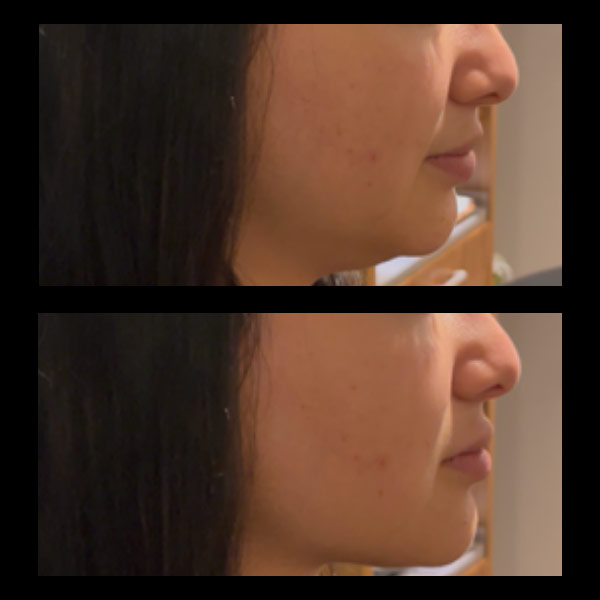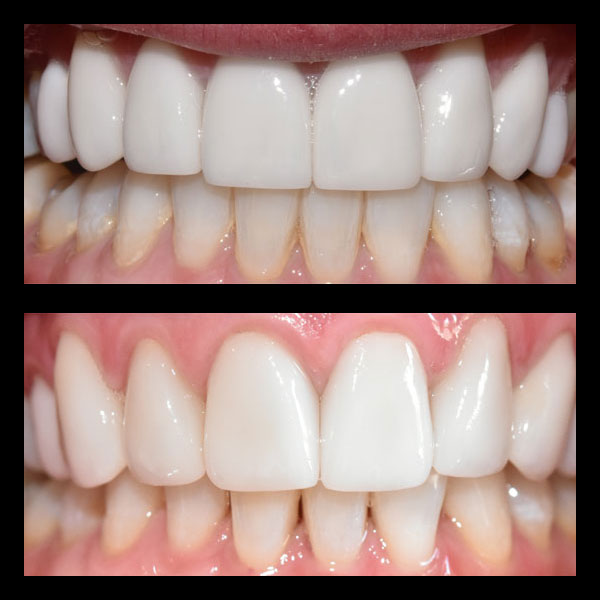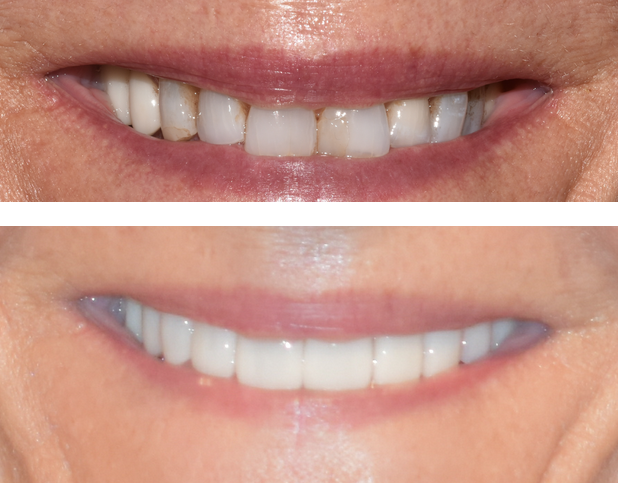Hey everyone, let’s talk teeth for a minute. I know, I know, the mere mention of dental work can sometimes make folks a little… tense. We’ve all probably got some memory, maybe from way back, of noisy drills or procedures that felt like a major undertaking. But here’s the good news, and it’s something I’ve seen evolve dramatically over my years writing about health and wellness: dentistry, especially restorative dentistry, has made huge strides towards being gentler, smarter, and much less invasive. It’s a philosophy that’s really changing the game, and honestly, it’s about time!
Today, I want to dive into the world of minimally invasive restorative dentistry. It’s not just a buzzword; it’s a fundamental shift in how dentists approach fixing and enhancing smiles, focusing on preserving as much of your natural tooth structure as possible. Think of it as precision repair rather than wholesale replacement. As we approach the midpoint of 2025, this trend isn’t just emerging; it’s becoming the standard of care patients are actively seeking out. People want results, absolutely, but they also want procedures that respect their natural biology and offer comfort and long-term health. Let’s unpack what that really means.
Understanding Minimally Invasive Restorative Dentistry
So, what’s the core idea behind minimally invasive restorative dentistry? At its heart, it’s about doing the *least* amount of dental work necessary to achieve the *best* possible outcome. It’s a mindful approach that prizes your natural teeth. For decades, the default for certain issues might have been more aggressive – think removing significant tooth structure for a crown, even if a smaller fix could work. Minimally invasive dentistry flips that script. The goal is always to conserve, conserve, conserve.
This approach isn’t just about being conservative; it’s built on a few key principles. First, there’s early detection and prevention. Catching issues like decay or wear when they’re small means the fix can be small too. Second, it relies heavily on advanced technology. We’re talking tools that allow dentists to see with incredible clarity and work with pinpoint accuracy. Think 3D cone beam imaging (CBCT), which gives a detailed, three-dimensional view of your teeth, jaw, and surrounding structures. This isn’t your old-school blurry X-ray; it’s like having a GPS for your mouth, allowing for incredibly precise planning for things like implants or root canals, often avoiding more complex surgery. Then there are dental lasers, which can sometimes be used to remove decay or reshape tissue with remarkable precision and often less discomfort than traditional methods. And let’s not forget digital scanning! Gone are the days of goopy impression trays for many procedures. Intraoral scanners create highly accurate digital models of your teeth, leading to better-fitting restorations like crowns, bridges, and veneers, often requiring less adjustment and less removal of healthy tooth structure to make them fit.
But it’s not *just* about the cool gadgets. There’s an artistic component too. It’s about understanding materials – like advanced composite resins for fillings or ultra-thin porcelain for veneers – that bond strongly to teeth and mimic their natural appearance and strength. It requires a deep understanding of tooth anatomy and function to restore teeth in a way that looks natural and works harmoniously with the rest of your mouth.
Finally, and this is crucial, a truly minimally invasive approach is deeply rooted in personalized care and overall patient wellness. It’s not one-size-fits-all. It means understanding your specific situation, your health history, your goals, and tailoring the treatment accordingly. It considers the mouth as part of the whole body, recognizing that how your teeth fit together (your occlusion) can impact everything from jaw comfort to headaches, and even posture. This holistic view ensures that the restoration isn’t just fixing a tooth, but contributing positively to your overall well-being.
Key Procedures and Technologies in Minimally Invasive Dentistry
Alright, let’s get specific. Where does this “less is more” philosophy really shine? You’d be surprised how many common dental procedures can now be performed with a minimally invasive mindset, thanks to better techniques and technology.
- Dental Bonding: Got a small chip or gap? Instead of jumping to a full veneer or crown, dental bonding uses tooth-colored composite resin, sculpted directly onto the tooth, often with little to no removal of the existing tooth structure. It’s a fantastic, conservative way to make cosmetic improvements.
- Composite (Non-Metal) Fillings: Remember those dark metal fillings? Modern composite fillings are not only tooth-colored (so they blend right in), but they also allow the dentist to remove only the decayed portion of the tooth. The material bonds directly to the tooth, often strengthening the remaining structure, unlike traditional amalgam fillings which sometimes required removing healthy parts of the tooth just to hold the filling in place.
- Veneers (Minimal-Prep or No-Prep): Veneers used to always require shaving down a significant layer of the tooth surface. While some preparation is still needed in many cases for optimal results, advancements in porcelain technology (like Lumineers, which are ultra-thin) and bonding techniques mean that some veneers can be placed with very minimal, or sometimes even no, removal of healthy enamel. This preserves the natural strength of your tooth underneath.
- Inlays and Onlays: These are like partial crowns. Instead of covering the entire tooth, an inlay fits *within* the cusps (bumps) of the tooth, while an onlay covers one or more cusps. They are custom-made restorations, typically from porcelain or composite, that allow the dentist to restore a damaged area while preserving more of the healthy tooth than a full crown might.
- Dental Implants with 3D Planning: Replacing a missing tooth with an implant is inherently restorative, but *how* it’s done matters. Using 3D cone beam imaging (CBCT) allows for meticulous planning of the implant placement *before* surgery. This means the dentist knows the precise location, depth, and angle, often allowing for placement through a small, precise opening in the gum tissue rather than extensive surgical flaps. This translates to less discomfort, faster healing, and often avoids the need for additional bone grafting procedures.
- Crowns & Bridges with Digital Accuracy: Even when a full crown or bridge is necessary, modern techniques minimize intervention. Digital scanning creates super-accurate models, leading to restorations that fit perfectly with minimal adjustment (and less drilling on your natural teeth or adjacent teeth). High-strength, aesthetic materials like zirconia or modern porcelains mean these restorations can be made strong even when they aren’t overly bulky, preserving more tooth structure underneath.
Underpinning many of these procedures is the use of advanced technology. Digital scanning ensures precision fits. Lasers can sometimes replace the drill for removing decay or preparing surfaces. And crucially, a holistic or physiologic (neuromuscular) approach plays a huge role. This involves looking beyond just the individual tooth and considering how your entire bite system works. Techniques like TENS (Transcutaneous Electrical Nerve Stimulation) can relax jaw muscles to find their ideal resting position. Computerized bite analysis can map out precisely how your teeth come together, identifying interference points that could cause wear, fractures, or TMJ pain down the line. By addressing these bite issues *before* or *during* restorative work, dentists can ensure restorations are not only beautiful but also function comfortably and are less likely to fail prematurely due to uneven forces. It’s about creating a balanced system, which is inherently conservative in the long run.
Patient Benefits: Achieving Natural Results with Minimal Intervention
Okay, so we’ve talked about the ‘how’ and the ‘what’. Let’s get to the part *you* probably care most about: the ‘why’. What are the real advantages for you, the patient, when your dentist embraces minimally invasive restorative dentistry?
The most obvious benefit is the preservation of your natural tooth structure. Every time healthy tooth enamel or dentin is removed, the tooth is slightly weakened. Minimally invasive techniques aim to keep as much of your original tooth intact as possible. This isn’t just philosophically nice; it often leads to stronger teeth that are less prone to fracture or needing more extensive work later on. Think of it like keeping the good foundation of a house instead of tearing it down to the studs for a minor renovation.
This conservation approach often translates to less discomfort and reduced recovery time. Less drilling usually means less potential for sensitivity. Procedures like laser dentistry or precisely planned implant surgery often involve less trauma to the surrounding tissues, meaning quicker, more comfortable healing. For many people, this significantly reduces dental anxiety – knowing the procedure is designed to be as gentle as possible can make a world of difference.
Another major plus? Often better long-term outcomes. By preserving more natural tooth structure and ensuring restorations work in harmony with your bite (thanks to those neuromuscular techniques!), minimally invasive dentistry can lead to results that look great, feel comfortable, and stand the test of time. You’re less likely to run into problems caused by restorations putting undue stress on certain teeth or your jaw joints.
Let’s talk aesthetics. Minimally invasive doesn’t mean compromising on looks. Quite the opposite! Techniques like bonding and minimal-prep veneers, using advanced materials that mimic natural tooth shades and translucency, allow for incredibly beautiful, lifelike dental restoration. The focus is on enhancing your smile while keeping it looking like *your* smile, just healthier and brighter. This approach avoids the overly opaque or bulky look that sometimes resulted from older, more aggressive techniques.
From an SEO perspective, understanding terms like `restorative dentistry`, `minimally invasive`, and `dental restoration` helps patients find practices that align with this philosophy. People are actively searching for gentler, more conservative options, and knowing the language helps connect them with the right care.
Ultimately, the combination of emerging technologies, high-quality materials, and personalized treatment plans focused on minimal intervention leads to dental work that doesn’t just fix problems but enhances your overall dental health and confidence, often with a more comfortable and less stressful patient experience. It’s about achieving both functional and aesthetic improvements in the smartest, most conservative way possible.
Incredible Smiles: Leading the Way in Minimally Invasive Dental Restoration in Boulder, Colorado
Now, knowing all this is great, but finding a practice that truly embodies this philosophy, with the experience and technology to back it up, is key. And that’s where I want to talk about a place right here in Boulder that lives and breathes this approach: Incredible Smiles.
With over 30 years serving the Boulder community, Incredible Smiles isn’t just following trends; they’ve long been committed to blending artistry with science for exceptional dental outcomes. Their entire approach is built around providing comprehensive care that prioritizes patient wellness and utilizes minimally invasive techniques whenever possible. They genuinely believe in preserving your natural smile while enhancing its health and beauty.
How do they do it? They invest heavily in the very technologies we’ve been discussing. They utilize state-of-the-art 3D cone beam imaging (CBCT) for precise diagnostics and planning, digital scanning for accurate impressions without the goop, and dental lasers for specific procedures requiring utmost precision and comfort. This tech isn’t just for show; it directly enables their team, including highly skilled dentists like Dr. Priya Uppal and Dr. Lori Kemmet, to perform `restorative dentistry` with minimal intervention.
Furthermore, their expertise spans cosmetic, general, and restorative dentistry, allowing them to take a holistic view. They understand that a beautiful smile is also a functional one. This is where their deep knowledge of physiologic (neuromuscular) techniques comes into play. They offer services like TMJ Treatment and Bite Optimization to ensure that any `dental restoration` work, from a single filling to a full mouth reconstruction, functions harmoniously within your unique bite system. This minimizes stress on your teeth and jaw joints, promoting long-term comfort and the longevity of the restorations themselves.
Take a look at their services – many are prime examples of minimally invasive principles in action:
- Veneers & Lumineers: Often requiring minimal tooth preparation to correct chips, discoloration, or minor misalignments.
- Dental Bonding & Smile Makeovers: Conservative options to repair and enhance teeth, often in a single visit.
- Composite (Non-metal) Fillings: Preserving maximum tooth structure while restoring areas of decay.
- Crowns & Bridges: Designed with digital precision for optimal fit and minimal adjustment.
- Dental Implants: Planned using 3D imaging for precise, often less invasive placement.
Their commitment goes beyond just the procedures. Incredible Smiles fosters a warm, spa-like environment designed to make patients feel relaxed and cared for. It’s about total patient wellness, understanding that a positive, comfortable experience is just as important as the clinical outcome. They focus on personalized care, taking the time to understand your goals and develop a treatment plan that makes sense for *you*.
If you’re in the Boulder area and looking for dental care that is effective, aesthetic, *and* prioritizes preserving your natural teeth through `minimally invasive` techniques, Incredible Smiles really stands out as a leader.
Ready for a Gentler Approach to Your Smile?
Whew, we covered a lot! But the main takeaway is this: modern restorative dentistry has evolved, and the focus is firmly on techniques that are less invasive, more precise, and ultimately better for your long-term dental health and comfort. Keeping as much of your natural tooth structure as possible isn’t just a nice idea; it’s the foundation of smart, effective dental care in 2025.
From advanced digital imaging and lasers to biocompatible materials and a deep understanding of bite mechanics, dentists today have incredible tools to restore and enhance smiles beautifully while minimizing intervention. It means less time in the chair, potentially less discomfort, faster recovery, and results that look and feel fantastic.
Here at Incredible Smiles in Boulder, Colorado, this philosophy is central to everything we do. We combine decades of experience with cutting-edge technology and a personalized, holistic approach to ensure you receive the best, most conservative care possible. We’re passionate about creating healthy, functional, beautiful smiles that last.
Are you curious about how minimally invasive restorative dentistry could benefit you? Maybe you have an old restoration you’re concerned about, or perhaps you’re considering cosmetic enhancements but want a conservative approach. We invite you to experience the Incredible Smiles difference.
Give us a call or visit our website to schedule a consultation. Let’s explore how we can help you achieve your dream smile, gently and effectively. We’d love to hear from you! What are your thoughts on minimally invasive dentistry? Share in the comments below!
Frequently Asked Questions
What is minimally invasive restorative dentistry?
Minimally invasive restorative dentistry focuses on achieving the best dental outcomes with the least amount of dental work, preserving as much of your natural tooth structure as possible. It involves precision repair techniques rather than aggressive treatments, using advanced technologies and materials.
How does technology play a role in minimally invasive dentistry?
Advanced technology is crucial in minimally invasive dentistry, utilizing tools like 3D cone beam imaging for detailed diagnostics and digital models for precise restorations. These technologies allow for less invasive procedures, more accurate planning, and better-fitting dental work with minimal discomfort.
What are some common procedures in minimally invasive dentistry?
Common procedures include dental bonding, composite fillings, minimal-prep or no-prep veneers, inlays and onlays, and dental implants with 3D planning. These methods aim to preserve natural tooth structure while providing effective dental restoration.
What benefits do patients experience from minimally invasive dentistry?
Patients benefit from the preservation of their natural tooth structure, less discomfort, reduced recovery time, and better long-term outcomes. Minimally invasive techniques often result in more natural-looking, comfortable restorations that are less likely to necessitate future dental work.
What makes minimally invasive restorations aesthetically appealing?
Minimally invasive restorations use advanced materials that match the natural tooth color and translucency, allowing for beautiful, lifelike restorations that enhance your smile while maintaining its natural look.








